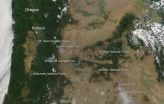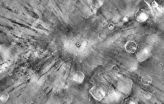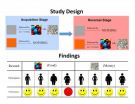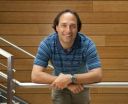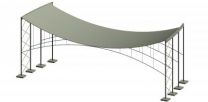Researchers demonstrate health risks posed by 'third hand' tobacco smoke
2014-07-16
(Press-News.org) Research led by the University of York has highlighted the potential cancer risk in non-smokers – particularly young children – of tobacco smoke gases and particles deposited to surfaces and dust in the home.
Until now, the risks of this exposure known as 'third hand tobacco smoke' have been highly uncertain and not considered in public policy.
However, a new study published in the journal Environment International, has estimated for the first time the potential cancer risk by age group through non-dietary ingestion and dermal exposure to third hand smoke. The results indicate potentially severe long-term consequences, particularly to children.
The research was carried out by York's Wolfson Atmospheric Chemistry Laboratories, the National Centre for Atmospheric Science, and the Chromatography and Environmental Applications research group at the Universitat Rovira i Virgili, Spain.
The study, which was supported by the UK Natural Environment Research Council (NERC) and the General Research Directorate of the Government of Catalonia, also demonstrates for the first time the widespread presence of tobacco related carcinogens in house dust, even in 'smoke-free' environments.
Scientists collected dust samples from private homes occupied by both smokers and non-smokers. Using observations of house dust composition, they estimated the cancer risk by applying the most recent official toxicology information.
They found that for children aged one to six years old, the cancer risks exceeded the limit recommended by the US Environmental Protection Agency (EPA) in three quarters of smokers' homes and two thirds of non-smokers' homes. The maximum risk predicted from the third hand smoke levels in a smoker occupied home equated to one extra cancer case per one thousand population exposed.
Lead investigator, Dr Jacqueline Hamilton, from York's Wolfson Atmospheric Chemistry Laboratories, said: "The risks of tobacco exposure do not end when a cigarette is extinguished. Non-smokers, especially children, are also at risk through contact with surfaces and dust contaminated with residual smoke gases and particles, the so-called third hand smoke. This risk should not be overlooked and its impact should be included in future educational programs and tobacco-related public health policies."
Each year 600,000 people die worldwide through passive inhalation of environmental tobacco smoke, also known as second hand smoke. As numerous countries have introduced smoking bans in public places, the home has become the main source of passive smoking exposure.
Professor Alastair Lewis, from York's Wolfson Atmospheric Chemistry Laboratories and the National Centre for Atmospheric Science, said: "Over 40 per cent of children have at least one smoking parent and whereas there is a general public awareness about the harms of second hand smoke, there is little knowledge about the dangers of third hand smoke. Carcinogenic materials can be passed from smokers to non-smokers during shared contact, for example between clothes and surfaces and also enter homes via airborne transport of cigarette smoke."
The researchers examined exposure to carcinogen N-nitrosamines and tobacco specific nitrosamines (TSNAs) in the dust samples. These are produced when nicotine deposits on indoor surfaces and then is released again to the gas phase or reacts with ozone, nitrous acid and other atmospheric oxidants. They are classified as carcinogenic for humans.
Measurements were made using a comprehensive two-dimensional gas chromatography system, which was originally funded by NERC to study particulate matter in the atmosphere.
Professor Rosa Maria Marcé, from the Universitat Rovira i Virgili, Tarragona, said: "This highly selective and sensitive instrument has allowed the small amounts of TSNAs stuck to the surface of house dust to be measured for the first time."
Dr Noelia Ramirez, a Postdoctoral Research Fellow from York's Wolfson Atmospheric Chemistry Laboratories who started this research line, said: "While TSNAs have been suspected to form part of third hand smoke as a result of laboratory studies, we have demonstrated for the first time the presence of carcinogenic tobacco-specific compounds, such as TSNAs, in settled house dust found in a panel of smokers' and non-smokers' homes.
"The TSNAs concentrations found in smoke-free homes would suggest that TSNAs formed in smoking environments can persist for extended periods, possibly due to partitioning to ambient particles, and subsequently be transported into non-smokers' homes from outside."
INFORMATION:
ELSE PRESS RELEASES FROM THIS DATE:
Squid skin protein could improve biomedical technologies, UCI study shows
2014-07-16
Irvine, Calif., July 16, 2014 – The common pencil squid (Loliginidae) may hold the key to a new generation of medical technologies that could communicate more directly with the human body. UC Irvine materials science researchers have discovered that reflectin, a protein in the tentacled creature's skin, can conduct positive electrical charges, or protons, making it a promising material for building biologically inspired devices.
Currently, products such as retinal implants, nerve stimulators and pacemakers rely on electrons – particles with negative charges – to transmit ...
National Psoriasis Foundation awards $1.05 million in research grants
2014-07-16
PORTLAND, Ore. (July 16, 2014)—Thirteen scientists received a total of $1.05 million in funding from the National Psoriasis Foundation for projects that aim to identify new treatments and a cure for psoriasis—an autoimmune disease that appears on the skin, affecting 7.5 million Americans—and psoriatic arthritis—an inflammatory arthritis that affects the joints and tendons, occurring in up to 30 percent of people with psoriasis.
Learn more about the NPF research grant program: http://www.psoriasis.org/research.
This year, three scientists each received a two-year, $200,000 ...
70-foot-long, 52-ton concrete bridge survives series of simulated earthquakes
2014-07-16
VIDEO:
A 70-foot-long, 52-ton concrete bridge survived a series of earthquakes in the first multiple-shake-table experiment in the University of Nevada, Reno's new Earthquake Engineering Lab, the newest addition to the...
Click here for more information.
RENO, Nev. – A 70-foot-long, 52-ton concrete bridge survived a series of earthquakes in the first multiple-shake-table experiment in the University of Nevada, Reno's new Earthquake Engineering Lab, the newest addition to the ...
Dozens of fires plague Oregon
2014-07-16
Fires are a way of life during the hot, dry summer days, but that does not mean they are ever taken for granted. Thousands of lightning strikes Sunday (7/13) and early Monday (7/14) probably started most of the wildfires, which are burning on private, public and reservation land. Dozens of fires are plaguing the forest areas in the state of Oregon. In this image, are shown the Buzzard Fire, the Shaniko Butte fire, the Bridge 99 Complex fire, and the Saddle Draw Fire.
The Buzzard Complex fire began as a lightning strike. Difficult terrain, combined with extremely dry ...
Arizona State University, US Geological Survey project yields sharpest map of Mars surface properties
2014-07-16
Tempe, Ariz. -- A heat-sensing camera designed at Arizona State University has provided data to create the most detailed global map yet made of Martian surface properties.
The map uses data from the Thermal Emission Imaging System (THEMIS), a nine-band visual and infrared camera on NASA's Mars Odyssey orbiter. A version of the map optimized for scientific researchers is available at the U.S. Geological Survey (USGS).
The new Mars map was developed by the Geological Survey's Robin Fergason at the USGS Astrogeology Science Center in Flagstaff, Ariz., in collaboration ...
Organismal biologists needed to interpret new trees of life
2014-07-16
Rapidly accumulating data on the molecular sequences of animal genes are overturning some standard zoological narratives about how major animal groups evolved. The turmoil means that biologists should adopt guidelines to ensure that their evolutionary scenarios remain consistent with new information—which a surprising number of scenarios are not, according to a critical overview article to be published in the August issue of BioScience and now available with Advance Access.
The article, by Ronald A Jenner of the Natural History Museum in London, describes how evolutionary ...
When it comes to food, obese women's learning is impaired
2014-07-16
Obese women were better able to identify cues that predict monetary rewards than those that predict food rewards, according to a study by Yale School of Medicine researchers and their colleagues in the journal Current Biology. The findings could result in specific behavioral interventions to treat obesity.
"Instead of focusing on reactions to the food itself, such interventions could focus on modifying the way in which obese individuals learn about the environment and about cues predicting food rewards," said lead author Ifat Levy, assistant professor of comparative medicine ...
Oregon study details brain pathways linking visual function, running
2014-07-16
EUGENE, Ore. – (July 16, 2014) – A new study by researchers at the University of Oregon published today in the journal Neuron describes a brainstem circuit in mice that may help explain how active movement impacts the way the brain processes sensory information.
"Previous studies have examined changes in the visual cortex of mice during running. What was unknown was how do running and vision get linked together in the first place?" said Cristopher Niell, a biology professor in the Institute of Neuroscience and the senior author on the paper "Identification of a Brainstem ...
Efficient structures help build a sustainable future
2014-07-16
CORAL GABLES, Fla. (July 14, 2014) -- When envisioning a new structure, engineers often have to balance design choices against the environmental impact of materials used. It is estimated that 40 to 50 percent of greenhouse gases are produced by the construction industry, according to the California Integrated Waste Management Board. Lessening the impact of construction on the environment is a work in progress.
Researchers at the University of Miami (UM) and the University of Milwaukee School of Engineering are searching for designs and materials that are less harmful ...
A natural way to monitor, and possibly control populations of, stink bugs
2014-07-16
Anyone who has squashed a stink bug knows why they got their name. Although just a nuisance to homeowners, the insects feed on and damage fruits and vegetables, causing significant economic losses for farmers. Now scientists report in ACS' Journal of Natural Products that they've discovered certain stink bug pheromone components and made them artificially in the lab for the first time, and these substances can be used to monitor and manage their populations.
Ashot Khrimian and colleagues explain that the brown marmorated stink bug, also known as Halyomorpha halys, is ...

